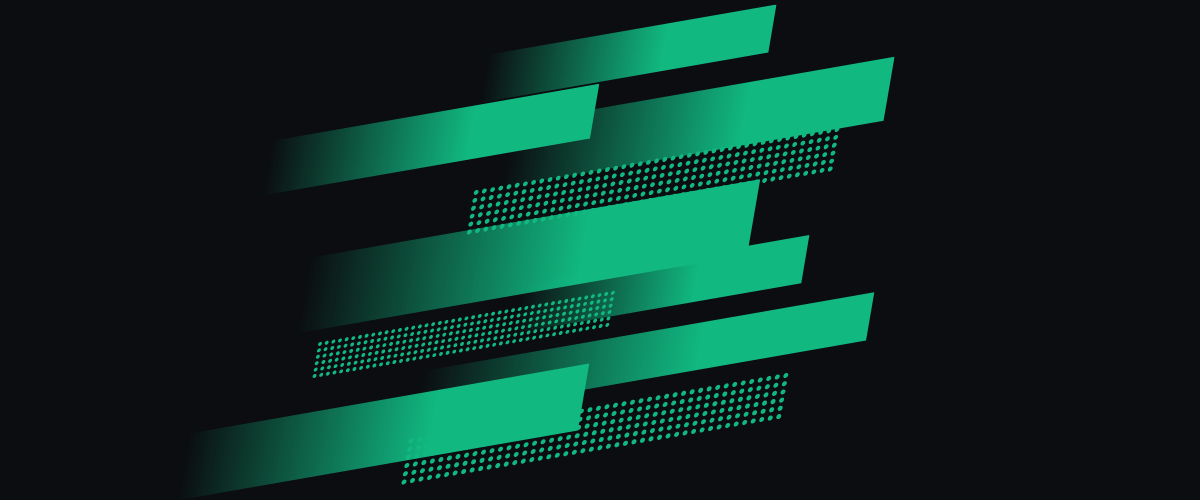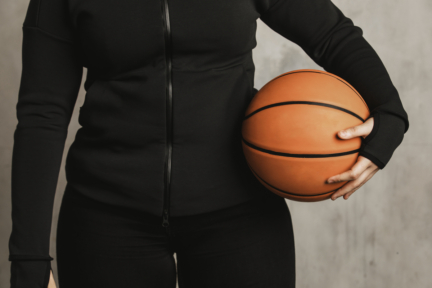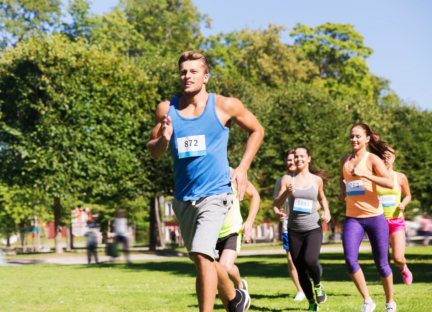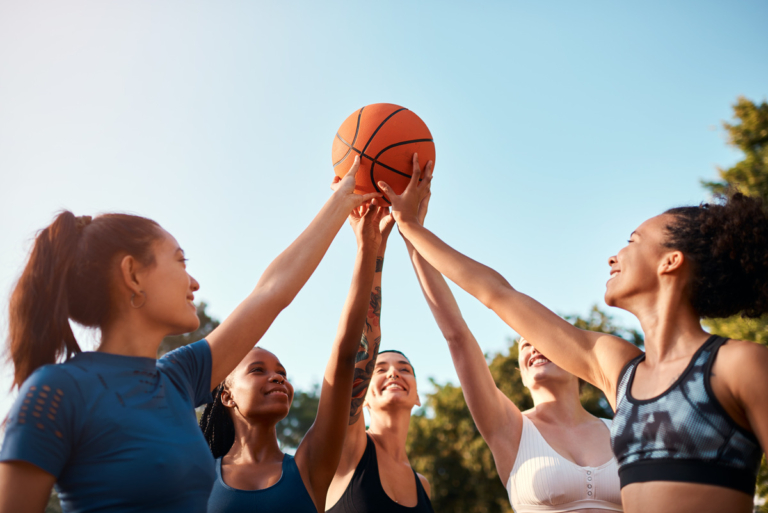College athletics is a thriving world, with thousands of student-athletes competing at different levels. While Division I athletes get a lot of attention, those in Division II and III also work hard and are just as passionate.
These athletes, especially those at smaller colleges, should have the same chance to profit from their Name, Image, and Likeness (NIL). Giving them nil opportunities could change their lives, letting them use their talent and hard work to their advantage.
By giving student-athlete nil rights to Division II and III athletes, we can make college sports more fair and welcoming for everyone.
Key Takeaways
- Division II and III athletes deserve equal NIL opportunities.
- NIL rights can significantly benefit small college athletes.
- Extending NIL opportunities promotes fairness in college athletics.
- Student-athletes in all divisions should be able to profit from their NIL.
- Creating a more inclusive environment is crucial for the future of college sports.
The Current State of NIL in College Athletics
The world of NIL in college sports is changing fast. There are big differences between the various divisions. It’s key to keep up with these changes and their effects on each division.
The Evolution of Name, Image, and Likeness Rights
Since the NCAA let athletes make money from their name, image, and likeness, a lot has changed. At first, only Division I athletes could profit. But now, Division II and III athletes also have chances. This change has brought new opportunities for athletes in all divisions.
The Growing Divide Between Division Levels
Not all divisions see the same growth in NIL opportunities. Division I athletes get the biggest deals. But Division II and III athletes find it harder to get similar chances. This shows we need more fair NIL rules for everyone.
| Division Level | NIL Opportunities | Average Deal Value |
|---|---|---|
| Division I | High | $100,000+ |
| Division II | Moderate | $10,000–$50,000 |
| Division III | Limited | $1,000–$10,000 |
The table shows the current state of NIL in different divisions. It points out the gaps in opportunities and money. As NIL rules keep changing, we must work to make things fair for all athletes.
Division II NIL: Current Policies and Untapped Potential
College athletics are changing, and Division II athletes are set to gain from new NIL policies. The NCAA has updated its rules on Name, Image, and Likeness. This opens up new ways for athletes to make money from their talents and personalities.
NCAA’s Approach to Division II NIL Regulations
The NCAA has set rules for Division II athletes to make money from NIL. Following NCAA guidelines is key to avoid penalties. The rules cover things like what athletes can say, who can represent them, and what endorsements are okay.
Comparing Division II NIL Rules to Division I Framework
Division I athletes have led the way in NIL talks, but Division II athletes have their own rules. A big difference is the level of fame and marketability between the two. This affects how much money athletes can make from NIL deals. Knowing these differences helps Division II athletes in the NIL world.
The potential for Division II athletes in NIL is huge. As more schools and athletes learn about these chances, we’ll see more NIL activities at Division II.
Division III NIL Opportunities and Challenges
Division III student-athletes are at a crossroads. They face both opportunities and challenges in the evolving landscape of Name, Image, and Likeness (NIL) rights. As the NIL debate continues across college athletics, Division III athletes find themselves in a distinct position. They balance academic and athletic responsibilities while navigating new endorsement possibilities.
The Unique Position of Division III Student-Athletes
Division III student-athletes bring a unique set of characteristics to the NIL discussion. Without athletic scholarships, these students often rely on other forms of financial aid to pursue their education. This creates both opportunities and challenges in leveraging their NIL. On one hand, their amateur status and focus on academics can make them more attractive to certain brands looking for authentic endorsements. On the other hand, the lack of athletic scholarships means they may have less financial flexibility to invest in personal branding efforts.
Key statistics highlighting the unique position of Division III athletes include:
| Category | Division III Stats | National Average |
|---|---|---|
| Average GPA | 3.2 | 3.1 |
| Athletic Participation | 42% | 38% |
| Graduation Rate | 85% | 80% |
Barriers to NIL Implementation at D3 Schools
Despite the opportunities, Division III schools face several barriers to implementing effective NIL policies. Limited resources and infrastructure are significant challenges. Unlike larger Division I schools, Division III institutions often lack the specialized staff and funding to manage complex NIL programs. Additionally, regulatory compliance remains a concern, as D3 schools must navigate NCAA regulations while also adhering to state laws that may vary widely.
The table below summarizes some of the key barriers and potential solutions for Division III NIL implementation:
| Barrier | Potential Solution |
|---|---|
| Limited Resources | Collaborative NIL initiatives with other D3 schools |
| Regulatory Compliance | Regular training for athletic department staff |
| Lack of Brand Recognition | Leveraging social media to boost athlete profiles |
NAIA NIL Opportunities: A Model for Smaller Athletic Programs
The NAIA is leading the way for smaller athletic programs with its NIL policies. It shows how other schools can follow its lead. This helps smaller schools keep up with the big leagues.
NAIA’s Progressive Approach to Student-Athlete Rights
- Increased Exposure: NAIA athletes get more attention through NIL deals.
- Financial Opportunities: Athletes can earn income through endorsements and sponsorships.
- Competitive Advantage: Offering NIL chances can attract the best athletes to NAIA.
Transferable Strategies for Division II and III Programs
- Education and Guidance: Help athletes learn about and make the most of NIL opportunities.
- Community Engagement: Work with local groups to find NIL chances that help both athletes and the community.
- Innovative Marketing: Use social media and other tools to showcase athletes and draw sponsors.
By using these ideas, Division II and III schools can build their own strong NIL programs. They can do this in a way that fits their unique situation.
The Economic Case for Expanding Division II NIL Access
The world of college sports is changing fast. This change makes the case for Division II NIL access stronger. Right now, only Division I athletes can make money from their name, image, and likeness.
Market Analysis for Small College Athletic Endorsements
The market for endorsements by Division II athletes is full of potential. These athletes may not be as famous as those in Division I. But they have a big following in their local communities and on campus.
Local businesses can gain a lot by working with Division II athletes. It can help them reach more fans. Plus, these athletes are real and relatable, which can build strong brand loyalty.
Economic Impact on Campus and Local Communities
Revenue Generation Possibilities
Division II athletes can earn money through NIL activities. This money can be spent in their communities. It helps local businesses grow.
Community Business Engagement Opportunities
NIL activities can bring local businesses and the college closer together. Businesses can use the fame of Division II athletes to promote their products. This creates good partnerships for everyone.
| Economic Benefits | Community Impact | Athlete Benefits |
|---|---|---|
| Stimulates local economies through NIL-related earnings | Fosters stronger ties between local businesses and the college | Provides Division II athletes with financial opportunities |
| Increases visibility for local businesses through athlete endorsements | Enhances community engagement through sports events | Enhances athletes' personal branding and marketability |
In conclusion, giving Division II athletes NIL access is good for everyone. It helps the athletes, the college, and the local community. By understanding the market and using NIL endorsements, we can make college sports more inclusive and prosperous.
Equity Arguments: Why All Student-Athletes Deserve NIL Rights
Ensuring NIL equality across divisions is not just about fairness. It’s about recognizing the value all student-athletes bring to their institutions. The current disparity in NIL rights between Division I and other divisions has sparked a debate about equity and access to opportunities for all student-athletes.
The Ethical Framework for Universal NIL Access
The ethical argument for universal NIL access is rooted in fairness and equal treatment. All student-athletes, regardless of their division, contribute significantly to their colleges. They do this through their athletic achievements, community engagement, and academic performance. Denying some of these athletes NIL rights while granting them to others creates an unequal playing field.
Key ethical considerations include:
- The right to fair compensation for one’s work and talents
- Equal access to opportunities for personal branding and financial gain
- The need to address disparities in resource allocation across different divisions
Student-Athlete Advocacy Movements Across Divisions
Student-athlete advocacy movements have been key in pushing for NIL reform across all divisions. These movements have highlighted the disparities in NIL access. They have worked to raise awareness about the challenges faced by athletes in lower divisions.
By sharing their stories and experiences, student-athletes have built a strong case for why NIL rights should be extended to all athletes, regardless of their division.
The advocacy efforts have led to a growing recognition of the need for equity in NIL access. As the landscape continues to evolve, it’s likely that we will see further changes aimed at addressing the current disparities. These changes will ensure that all student-athletes have equal opportunities to benefit from their NIL.
Challenges Facing D2 and D3 Athletes in Securing NIL Deals
Athletes at Division II and III levels face many hurdles in getting NIL deals. NIL rights are growing, but D2 and D3 athletes struggle to get good deals.
Media Exposure Limitations at Smaller Schools
D2 and D3 athletes have less media attention. They don’t get the spotlight like Division I athletes do. This makes it tough to find sponsors and build a brand for NIL deals.
Without media coverage, athletes can’t get national or local recognition. This limits their chances for sponsorships. It’s a tough cycle for D2 and D3 athletes to break.
Resource and Infrastructure Disparities
Marketing Approach Differences
Marketing is key for NIL deals. But D2 and D3 programs often can’t afford the marketing staff or resources. This makes it hard for athletes to promote themselves and attract sponsors.
Legal and Compliance Challenges
Understanding NIL deal laws is complex. D2 and D3 athletes, with less legal help, find it especially hard. This makes sponsors wary, reducing opportunities for these athletes.
In summary, D2 and D3 athletes face many challenges in getting NIL deals. These include less media attention and fewer resources. Fixing these issues is key to a fair NIL landscape for all college divisions.
Success Stories: How Non-D1 Athletes Have Leveraged NIL Effectively
Non-D1 athletes are now getting in on the NIL action. They’re showing that with the right plan, they can make the most of their Name, Image, and Likeness. This is true, no matter their division.
Case Studies of Division II NIL Deals
Division II athletes are getting their share of NIL deals. For example, University of West Florida swimmer, Alex Thompson, landed a big deal with a local business. Her success comes from her strong online presence and community ties.
Grand Valley State University’s football program is another success story. Several players have deals with local companies. These partnerships help the athletes and boost the local economy.
“The NIL landscape is changing rapidly, and we’re seeing more opportunities for our student-athletes to engage with local businesses,” said University of West Florida’s Athletic Director. “It’s a win-win for both parties.”
Division III Athletes Finding NIL Success
Division III athletes are also making the most of NIL. Wisconsin-Whitewater’s basketball star, Jake Lee, teamed up with a local apparel brand. His deal reflects his hard work and the encouragement he’s received from his university.
Also, Trinity University’s volleyball team has players with NIL deals. These deals help them grow their brand and give back to their community.
These stories prove that non-D1 athletes can succeed with NIL. They show that with the right strategy, athletes from all divisions can thrive.
NIL Collectives for Small Schools: Building Sustainable Growth Networks
NIL collectives are changing how small schools help their athletes. They offer a key way for athletes to use their name, image, and likeness. These groups pool resources to help athletes make the most of their opportunities.
Establishing NIL Collectives at Division II and III Institutions
Starting an NIL collective at Division II and III schools needs careful planning. It involves working with alumni, local businesses, and the community. Together, they can create a strong network that empowers athletes.
Collaborative Approaches to NIL Development
Alumni Network Engagement Strategies
Getting alumni involved is key to a successful NIL collective. Alumni can offer financial help, mentorship, and networking. These benefits can greatly help student-athletes.
Pooling Resources for Greater Impact
By combining resources, NIL collectives can make a bigger difference. They can create a shared fund or work together on marketing. This increases visibility for athletes.
The success of NIL collectives is clear in the data:
| Institution Type | NIL Collective Presence | Athlete Support Level |
|---|---|---|
| Division II | Yes | High |
| Division III | No | Low |
| Division II | No | Medium |
NIL collectives offer small schools an effective way to empower their athletes. By collaborating and involving various groups, schools can create sustainable systems that benefit everyone involved.
Women’s Sports and NIL in Division II and III Athletics
The world of women’s sports and Name, Image, and Likeness (NIL) in Division II and III is growing. Female athletes in smaller schools are finding new chances to shine. As rules change, these athletes are ready to make the most of it.
Unique Opportunities for Female Athletes at Smaller Schools
Female athletes in Division II and III are finding new ways to make money. With the right help, they can get endorsement deals and grow their personal brands. It’s all about knowing the local market and finding good partnerships.
NIL isn’t just about sports marketing. Female athletes can also use their community work, academic success, or team leadership. These are great ways to show their value.
Addressing Gender Equity Through Inclusive NIL Policies
Inclusive NIL policies are key to fairness in Division II and III sports. By giving female athletes the same NIL chances, schools can be more balanced. It’s about ensuring all athletes have equal access to resources and information.
Local and Regional Sponsorship Strategies for D2/D3 Athletes
Division II and III athletes are using local and regional sponsorships to grow their NIL value. They form partnerships that benefit both sides. “The key to successful NIL deals lies in understanding the local market and identifying opportunities that align with the athlete’s personal brand,” says John Smith, a sports marketing expert.
Building Community-Driven NIL Programs
To build community-driven NIL programs, athletes need to know what the local community wants and likes. They can team up with local businesses for sponsored content, events, or charity work. This boosts their visibility and the community’s involvement.
Key strategies include:
- Identifying local businesses that align with the athlete’s values
- Creating sponsored content that resonates with the local audience
- Engaging in community events to boost visibility
Creating Mutually Beneficial Local Partnerships
It’s important to make local partnerships work for everyone. Athletes can team up with small businesses to get more exposure. This helps businesses reach their audience too.
Small Business Collaboration Models
There are many ways small businesses and athletes can work together. They can do co-branded social media campaigns or in-store promotions. For example, an athlete could team up with a local gym for fitness workshops. This promotes both the athlete’s brand and the gym’s services.
Measuring ROI for Local Sponsors
To see if local sponsorships are worth it, you need to track certain metrics. Look at social media impressions, event attendance, and sales from promotions. This data helps improve future partnerships and shows the value to sponsors.
“By focusing on local and regional sponsorships, Division II and III athletes can not only enhance their NIL value but also contribute to the economic and social fabric of their communities.”
Division II Football NIL Deals: Untapped Opportunities
College athletics are changing, and Division II football players are finding new NIL chances. The growing fan base and popularity of Division II football make it a great place for creative NIL deals.
The Passionate Fan Base of Division II Football
Division II football teams have dedicated fans who show a lot of community spirit. This fan involvement can help athletes discover NIL opportunities. Local businesses are more likely to partner with Division II athletes who have a big following and influence in the community.
A Division II football player can work with a local sports store. They can promote the store’s brand at games and events. This helps the store sell more and gives the athlete money and more visibility.
Creating Sustainable NIL Models for D2 Football Programs
To make the most of NIL chances, Division II football programs need solid models. These models should help both athletes and the school. This means teaching athletes about NIL and setting rules for partnerships.
A good NIL model could be a collective. It gets money from alumni, local businesses, and fans to help athletes. This collective can make deals for athletes, making sure they get fair pay and follow NCAA rules.
Cross-Border NIL for Small College Athletes
The world of college sports is changing fast. Cross-border NIL opportunities are now big for small college athletes. More international students are playing at Division II and III schools. This change brings both chances and hurdles for Name, Image, and Likeness rights.
International Student-Athletes and Global NIL Potential
International student-athletes add something special to small college sports. They often have many followers on social media in their home countries. This can open up NIL opportunities for them, reaching markets worldwide.
For example, a soccer player from Brazil at a U.S. Division II school could work with Brazilian brands. This could help them grow their brand and make money.
Navigating Regulatory Differences Across Borders
One big challenge in cross-border NIL deals is dealing with different laws. Laws on athlete pay, endorsements, and taxes vary by country. For instance, some places have strict rules on athlete endorsements, while others are more relaxed.
To handle these differences, athletes and their teams need to know the laws in the U.S. and their home country. They might need legal help to make sure they follow the rules and get the most from NIL deals.
Conclusion: Advancing NIL Equality Across All College Divisions
The world of Name, Image, and Likeness rights in college sports is changing fast. Division II and III athletes face big challenges in getting NIL deals. But they also have a lot of potential.
Right now, there’s a big gap between division levels. Division I athletes get more chances and attention. This isn’t fair to athletes in other divisions.
To make things fair, we need a big plan. We should help athletes in smaller schools get NIL deals. This means partnering with local sponsors and building sustainable networks.
This way, all athletes can get the same chances to make money from their NIL rights. It’s about making college sports fair for everyone.
There’s a strong case for giving Division II athletes more NIL chances. It’s good for them and their communities. Plus, stories of non-D1 athletes doing well show us what’s possible.
By pushing for equality, we can make college sports better for everyone. It’s about fairness and giving every athlete a chance to shine.
We need to keep fighting for all athletes to have the same rights. Together, we can make college sports a better place for everyone.
FAQ
What are the current NIL policies for Division II athletes?
The NCAA lets Division II athletes make money from their name, image, and likeness. They can do this through endorsements, appearances, and other business deals. But, they must follow NCAA rules.
How do Division III NIL opportunities compare to Division I?
Division III NIL opportunities are still growing but have more rules than Division I. Division I athletes have more freedom and exposure. But, Division III athletes can still use their NIL, just with more limits.
Can NAIA athletes benefit from NIL opportunities?
Yes, NAIA athletes can benefit from NIL. The NAIA has rules that let its athletes make money from their name, image, and likeness. This is a good example for smaller athletic programs.
What are the challenges facing D2 and D3 athletes in securing NIL deals?
D2 and D3 athletes face big challenges. They have less media attention, fewer resources, and must follow strict rules. This makes it harder for them to get NIL deals compared to Division I athletes.
How can local and regional sponsorship strategies benefit D2/D3 athletes?
Local and regional sponsorship strategies can help D2/D3 athletes. They create community-driven NIL programs and partnerships with local businesses. This helps athletes earn income while contributing to their communities.
What role do NIL collectives play in helping athletes from small schools?
NIL collectives are very important for small school athletes. They combine resources, engage alumni networks, and build sustainable structures.This helps athletes find and use NIL opportunities.
Are there unique opportunities for female athletes at smaller schools?
Yes, female athletes at smaller schools have special opportunities through NIL. In women’s sports, inclusive NIL policies can help with gender equity. They also help promote female athletes in the market.
How can Division II football programs benefit from NIL deals?
Division II football programs can gain from NIL deals. They can connect with their passionate fans and create lasting NIL models. This helps athletes earn money and promote their programs.
What are the implications of cross-border NIL for small college athletes?
Cross-border NIL offers chances for small college athletes, especially international ones. But, it also brings regulatory challenges. These must be handled to follow laws in different countries.
How can community businesses engage with college athletes through NIL?
Community businesses can work with college athletes through NIL. They can partner for endorsements, appearances, and other ventures. This creates good relationships that help both the athlete and the business.






Leave a Comment